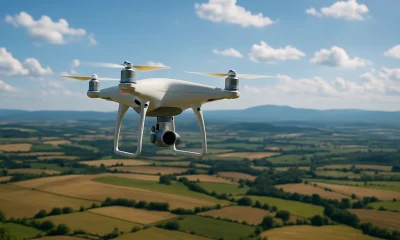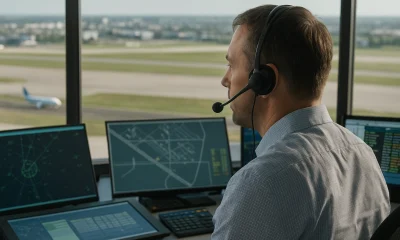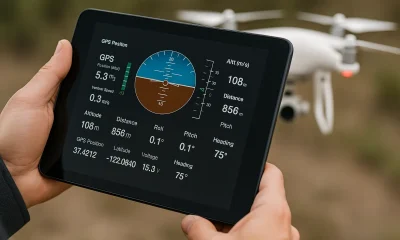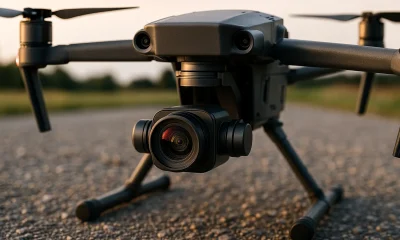UK Drone Regulations
UK Drone Regulations by Class
Published
11 months agoon
Table Of Contents

Specific Drone Regulations by Class
In the United Kingdom, the Civil Aviation Authority (CAA) categorizes drones into different classes based on their weight and capabilities. Each class has specific regulations that operators must follow to ensure safe and compliant drone operations. Understanding these regulations is crucial for any drone operator, as they dictate the types of operations that are permitted and the level of oversight required.
Class 0 (Up to 250g)
Definition
Class 0 drones are those that weigh up to 250 grams.
Regulations
- No Registration Required: Drones in this class do not require registration with the CAA, unless they are equipped with a camera.
- Operational Limits: These drones can be flown within the Open Category, under subcategory A1, which allows for flights over people but not over large gatherings.
- No-Fly Zones: Operators must still avoid restricted airspace, such as near airports and military installations.
- Competency Requirements: While a Flyer ID is not required for drones under 250 grams, operators must still follow all safety guidelines and remain within visual line of sight (VLOS).
Safety Considerations
- Propeller Guards: The use of propeller guards is recommended to reduce the risk of injury in case of a collision.
- Indoor Flights: Class 0 drones are ideal for indoor use, but operators should ensure the area is free of obstacles and that people are aware of the operation.
Class 1 (250g to 500g)
Definition
Class 1 drones weigh between 250 grams and 500 grams.
Regulations
- Registration Required: Operators must register the drone with the CAA and obtain both a Flyer ID and an Operator ID.
- Operational Limits: These drones fall within the A1 subcategory of the Open Category, allowing for flights over people, but not over large gatherings. Operators must maintain a safe distance from uninvolved people.
- Certification: Operators must pass the CAA’s online theory test to obtain a Flyer ID.
- No-Fly Zones: Drones in this class must avoid restricted airspace without prior authorization from the CAA.
Safety Considerations
- Pre-Flight Checks: Ensure thorough pre-flight checks, including battery levels, propeller conditions, and sensor functionality.
- Outdoor Use: These drones are suitable for outdoor use in areas where there are no large crowds and minimal obstacles.
Class 2 (500g to 2kg)
Definition
Class 2 drones weigh between 500 grams and 2 kilograms.
Regulations
- Registration Required: These drones must be registered with the CAA, and operators must have a Flyer ID and an Operator ID.
- Operational Limits: Typically flown in the A2 subcategory, which allows for operations closer to people if the operator holds a Certificate of Competency (A2 CofC). Without this certification, flights must be conducted in less populated areas under the A3 subcategory.
- Risk Assessments: Operators may need to conduct risk assessments depending on the complexity of the operation, especially in urban environments.
- Advanced Certification: For more complex operations, operators may need additional certifications or authorizations from the CAA.
Safety Considerations
- Increased Vigilance: Due to the larger size and higher speed capabilities, operators should exercise increased caution, especially in areas with more obstacles or people.
- Emergency Procedures: Develop and rehearse emergency procedures, including safe landing spots and protocols for dealing with unexpected events.
Class 3 (2kg to 25kg)
Definition
Class 3 drones weigh between 2 kilograms and 25 kilograms.
Regulations
- Registration Required: Mandatory registration with the CAA, including obtaining a Flyer ID and Operator ID.
- Operational Limits: These drones are generally flown within the Specific Category due to their size and potential risks. This requires obtaining an Operational Authorization from the CAA.
- Risk Assessment and Mitigation: Operators must conduct a comprehensive risk assessment and implement mitigation strategies tailored to the specific operation.
- Pilot Competency: Operators must hold advanced certifications, such as the General Visual Line of Sight Certificate (GVC), and demonstrate their ability to conduct safe operations.
Safety Considerations
- Heavy-Duty Safety Gear: Due to the potential for serious injury or damage, operators should consider using additional safety gear and protective measures.
- Detailed Pre-Flight Planning: Conduct detailed pre-flight planning, including site surveys and weather assessments, to ensure all risks are accounted for.
Class 4 (Above 25kg)
Definition
Class 4 drones are those that weigh more than 25 kilograms and are typically used for specialized commercial or industrial applications.
Regulations
- Certification Required: Both the drone and the operator must be certified by the CAA, similar to manned aircraft operations.
- Operational Authorization: An Operational Authorization from the CAA is required, with strict conditions and oversight.
- Controlled Airspace: These operations may require coordination with air traffic control and are generally conducted in controlled airspace.
- Insurance: Comprehensive insurance coverage is usually mandatory due to the high risks associated with operating such large drones.
Safety Considerations
- Professional Training: Operators must undergo rigorous training and continuous assessment to ensure they can handle the complexities of operating large drones.
- Operational Oversight: Operations should be conducted with extensive oversight, including real-time monitoring and safety protocols to address any potential issues.
Summary
Understanding the specific drone regulations by class is essential for ensuring compliant and safe operations in the U.K. The CAA’s framework categorizes drones based on their weight, with tailored rules for each class to address the varying levels of risk. Whether operating a small recreational drone or a large commercial UAV, adhering to these regulations helps protect public safety and ensures legal compliance.
To Learn more about acronyms used in this article visit our Drones Acronym Page.
Pros
Cons
You may like


What is BLOS (Beyond Line of Sight) & How Does it Work?


What is ATO (Authority to Operate) & How Does it Work?


What is ALPA (Air Line Pilots Association) & How Does it Work?


What is AEHF (Advanced Extremely High Frequency)?


What is TLM (Telemetry) & How Does it Work?


What is PTZ (Pan-Tilt-Zoom) & How Does it Work?